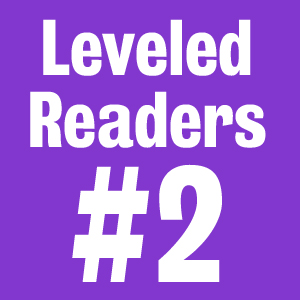
The Horn Book website has lots of material of interest to teachers. Here are some areas to explore. And follow us on Twitter: #lollysclass
|
Interviews with authors and illustrators Recommended books -- reviews and themed book lists |
School -- reading in school, author visits, and more Suggestion box: what else to you want to see in Lolly's Classroom? |
What’s in those leveled book boxes?
Recently, I was reading an article called “The Character of Our Content” in an archived issue of Rethinking Schools.
 Recently, I was reading an article called “The Character of Our Content” in an archived issue of Rethinking Schools. In this piece, a concerned mother critiques representations of gender and race in a basal anthology that her daughter was reading at school. The article got me thinking how incidents such as these are likely very common, as all too often nowadays, classroom texts come pre-packaged in kits, neatly labeled with seemingly-scientific level information designed to make the teacher’s job of selecting a “just-right” text easier.
Recently, I was reading an article called “The Character of Our Content” in an archived issue of Rethinking Schools. In this piece, a concerned mother critiques representations of gender and race in a basal anthology that her daughter was reading at school. The article got me thinking how incidents such as these are likely very common, as all too often nowadays, classroom texts come pre-packaged in kits, neatly labeled with seemingly-scientific level information designed to make the teacher’s job of selecting a “just-right” text easier.For busy teachers burdened with so many mandates, it is easy to understand what makes pre-bundled leveled books enticing – they are often short (ideal for a guided reading session), they (particularly the non-fiction books) can seem new and exciting with vibrant illustrations and photographs, and those letters or numbers on the back of the book make it easy to feel good about using such “scientific precision” in selecting a book that will be appropriate for a developing reader.
But are these leveled books high quality reads for our developing readers? When it comes to providing students with leveled books, there seems to be two approaches. The first is to try to approximate the level of pre-existing texts in a classroom library and the second is to use books designed by a publishing company with the specific intention of coinciding with a particular level. In my experience, I have found that most classrooms and schools use some combination of these two approaches.
The first approach, leveling books that already exist in a classroom library seems more likely to lead to students reading high-quality texts. For example, in a classroom library that I visited recently, I found classic books by Roald Dahl, E.B. White, and Judy Blume sorted into their corresponding leveled baskets. These books feature dynamic characters, interesting plots, and prompt students to stretch their thinking about the world around them. More often than not, titles falling into the pre-existing book category were written with an emphasis on providing a captivating or meaningful story with far less consideration given to monitoring the language and types of sentences used to make sure that it aligns with a certain text level.
The second approach, on the other hand, often results in students reading books that are written by people commissioned by the publishing companies, rather than professional authors who are producing Horn Book Award winners. Quite simply, the purpose in writing these books seems likely to be to fill out a leveled reading set, not necessarily to write an outstanding book that will stand on its own. Are there some interesting and high-quality books contained in leveled reading kits? Of course. But, the majority of the ones that I have encountered often tell simplistic stories written in unadorned language that fail to fully captivate students and get them excited about reading.
Like any books, it is to be expected that pre-packaged leveled books will vary in quality. However, when making selections for guided reading or other instructional practices, it is easy for the level of the text to become the primary factor in text selection, particularly when the pool of books at that level is rather shallow. While teachers clearly need to take into account whether a text is at an appropriate challenge level for a given student, the level of the text is just one factor that should be considered alongside reflections on how interesting students will find the text, how it connects to other things being studied in the classroom, and how it might resonate with students’ lives. Additionally, these books must be analyzed for obvious bias or stereotypes with the same degree of scrutiny given to any text invited into a classroom.
In a given year, students are only able to read so many books in their classrooms; thus, as educators, we must ask ourselves how we can make those reading experiences count. This is why it is critical than when we approach the shelves of a classroom or school library to seek books to incorporate into our instruction, quality and relevance should count at least as much as the word count and the letter or number on the back cover.
Reference
Holliday, J. (2012). “The Character of Our Content” in Rethinking Schools, 27 (2).
http://www.rethinkingschools.org/archive/27_02/27_02_holladay.shtml
Part of a four-part series on leveled reading.
You can find the others here.
RELATED
RECOMMENDED
ALREADY A SUBSCRIBER? LOG IN
We are currently offering this content for free. Sign up now to activate your personal profile, where you can save articles for future viewing.







Add Comment :-
Be the first reader to comment.
Comment Policy:
Comment should not be empty !!!